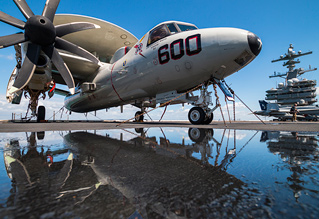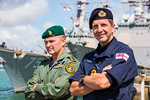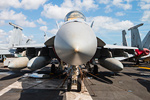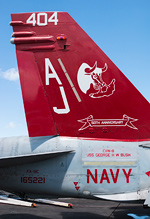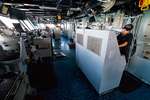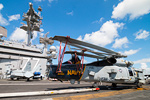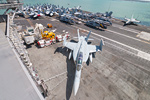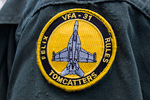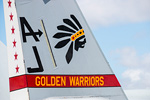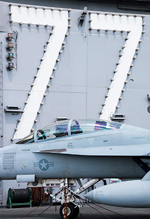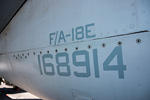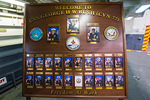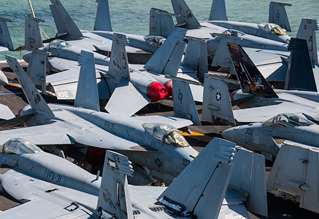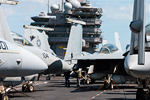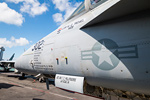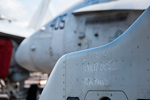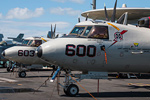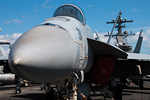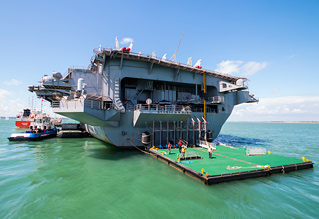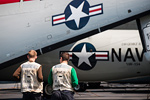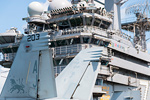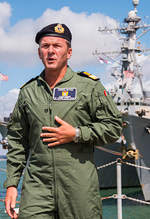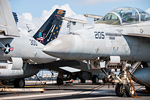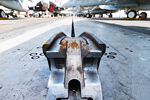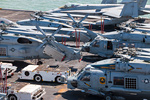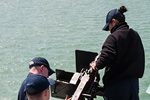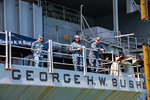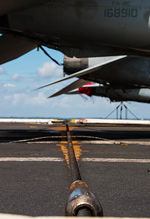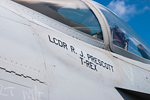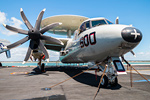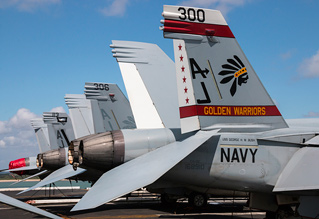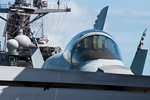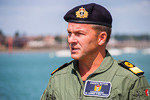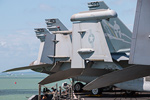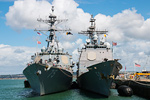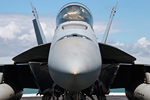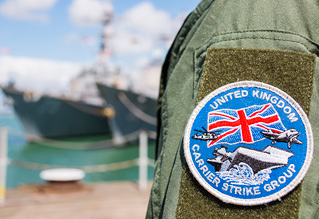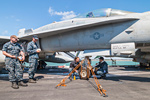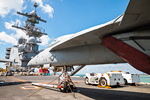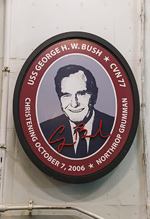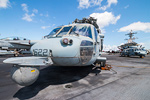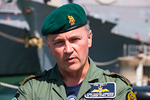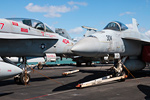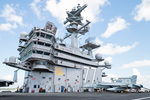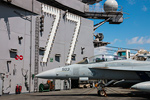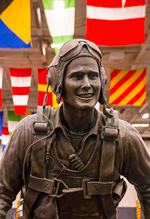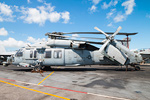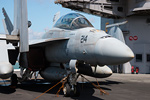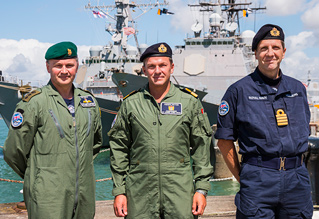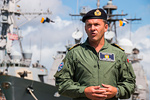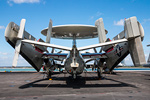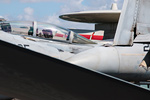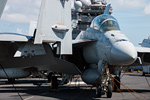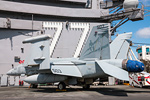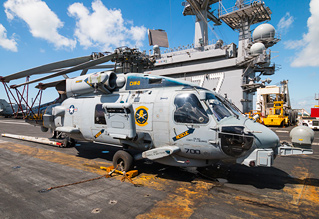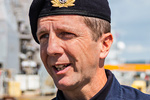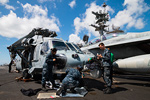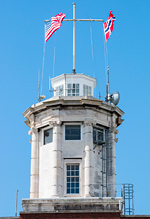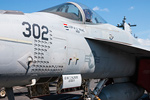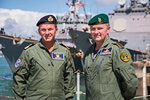USS George H W Bush
Monday 31st July 2017
The USS George H W Bush recently visited the UK following its second deployment in support of Operation Inherent Resolve - the Coalition effort against the so-called Islamic State. It anchored in Stokes Bay, Portsmouth in anticipation of Exercise Saxon Warrior 17, a joint forces training exercise which will give the UK vital fresh experience in commanding a Carrier Strike Group before HMS Queen Elizabeth turns fully operational.
visited the ship to report for UK Airshow Review. Photographs by the author.
The George HW Bush (CVN 77) is the last built of the Nimitz-class carriers and the second youngest in the US Navy's fleet, after the newly commissioned USS Gerald R Ford. Christened in 2006 and commissioned three years later, the Bush was the first US carrier to arrive in the Persian Gulf in support of Operation Inherent Resolve in 2014. Leaving its home in West Virginia in January, the carrier and its air wing undertook its second deployment in the fight against Islamic State, replacing the USS Dwight D Eisenhower which returned from the theatre late last year. The carrier's namesake has a strong naval history himself, being (allegedly) the youngest American naval pilot of the Second World War, receiving his wings at the age of just eighteen.
Rather than returning straight home for operations, the carrier has been assigned to take part in Exercise Saxon Warrior, or SW17, which will take place around the UK for two weeks during August. The primary task for this exercise is to prepare the Royal Navy for the return of fixed-wing carrier operations, a capability which it has not had fully since 2010 when the Harrier fleet was retired as part of the 2012 Strategic Defence and Security Review. Given the historically strong ties between the US and Royal Navies it is of no surprise that the USN's formidable carrier strength's have benefitted the UK during this capability gap. For many years British personnel have served onboard US Navy carriers, including the Bush, as part of the UK-US Long Lead Specialist Skills Programme, which has aimed to keep some element of carrier knowledge current in the Royal Navy.
With the HMS Queen Elizabeth now out at sea preparing for commissioning and with an anticipated first deployment in 2021, the Navy have been preparing, with the help of US Navy, for some time. UK Carrier Strike Group (CSG) Commander, Commodore Andrew Betton explains how the UK has been building up: "I, with my team, have been working very closely with the George HW Bush over the last nine months, both in the preparation for and indeed during their deployment out in the Gulf and in the Middle East, rediscovering the deep specialist skills which enable a Carrier Strike Group to be effectively and safely coordinated." Commodore Betton will be taking command of the Bush's strike group during SW17 and looks forward to the highest level of carrier training that the Royal Navy has had since the start of the decade.
Saxon Warrior 17 is a truly multinational exercise both on the sea and in the air. Alongside the George HW Bush and also visiting Portsmouth beforehand are the USS Philippine Sea and USS Donald Cook, the Norwegian HNoMS Helge Insgstad, all enjoying some shore leave before embarking on the exercise, as well as the Royal Navy's own Type 23 Frigates HMS Iron Duke and HMS Westminster. The air forces for SW17 is primarily American, but will also feature British helicopters as well as German and Swedish aggressor forces. The key British contribution, however, is personnel, who will be working together in command of a Carrier Strike Group at all levels.
It was clear that the carrier had only just returned from operations, with the rough and ready appearance of both the ship and its aircraft denoting a busy period of warfare. It was not uncommon to see Hornets with well over fifty mission marks on the nose, including on the legacy F/A-18C Hornets of VFA-37 the "Raging Bulls". Of particular note on board was F/A-18E AJ 302, which sported a single air-to-air kill marking next to the pilot's name. On the 18th of June the aircraft engaged a Syrian Air Force Su-22 Fitter which was attacking US-allied Syrian Democratic Forces troops, first with an AIM-9X Sidewinder, then with an AIM-120 AMRAAM when the first missile was defeated. This marked the first US shootdown of a manned enemy aircraft since 1999.
Though the Bush will be assisting the UK CSG during the fortnight-long exercise, the US Navy is continuing to support Inherent Resolve with the USS Nimitz, the Bush's much older sibling. The HMS Queen Elizabeth might be some years off reaching full capability yet, but she is well on her way to bringing the field of sea power which the UK so successfully pioneered over 100 years ago back to the Royal Navy.
PHOTO GALLERY:

